How to Dehydrate Zucchini
This post may contain affiliate links.
Dehydrating zucchini is a great way to store this seasonal squash, and spread the summer superabundance out over the whole year! In this post, we’ll share how to dehydrate zucchini chips, pieces, and shreds—as well as ideas for using them!
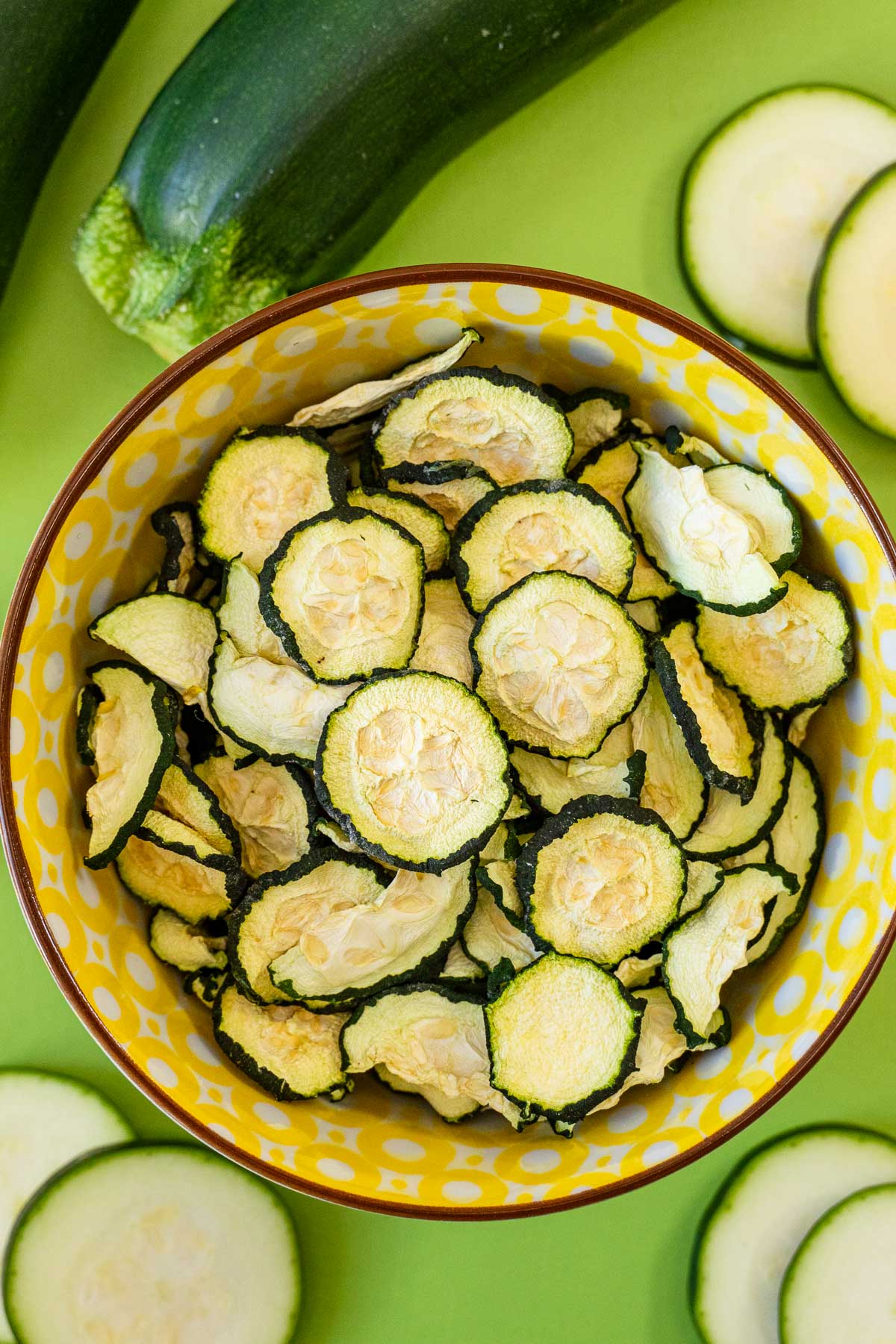
When it’s zucchini season (June to August), you’ll know it. Every home gardener in the vicinity will be trying to offer you half a dozen jumbo-sized zucchini. To wit: every few weeks in the summer our neighbor heaves “extra” zucchinis over the fence to us at a pace that even we can’t keep up with (thank you, Mary)!
The point is: when zucchinis are in season, it’s on. Figuring out what to do with them all can be a challenge—and zucchini bread will only get you so far! No, the best way to spread this seasonal superabundance out over the rest of the year is to dehydrate them.
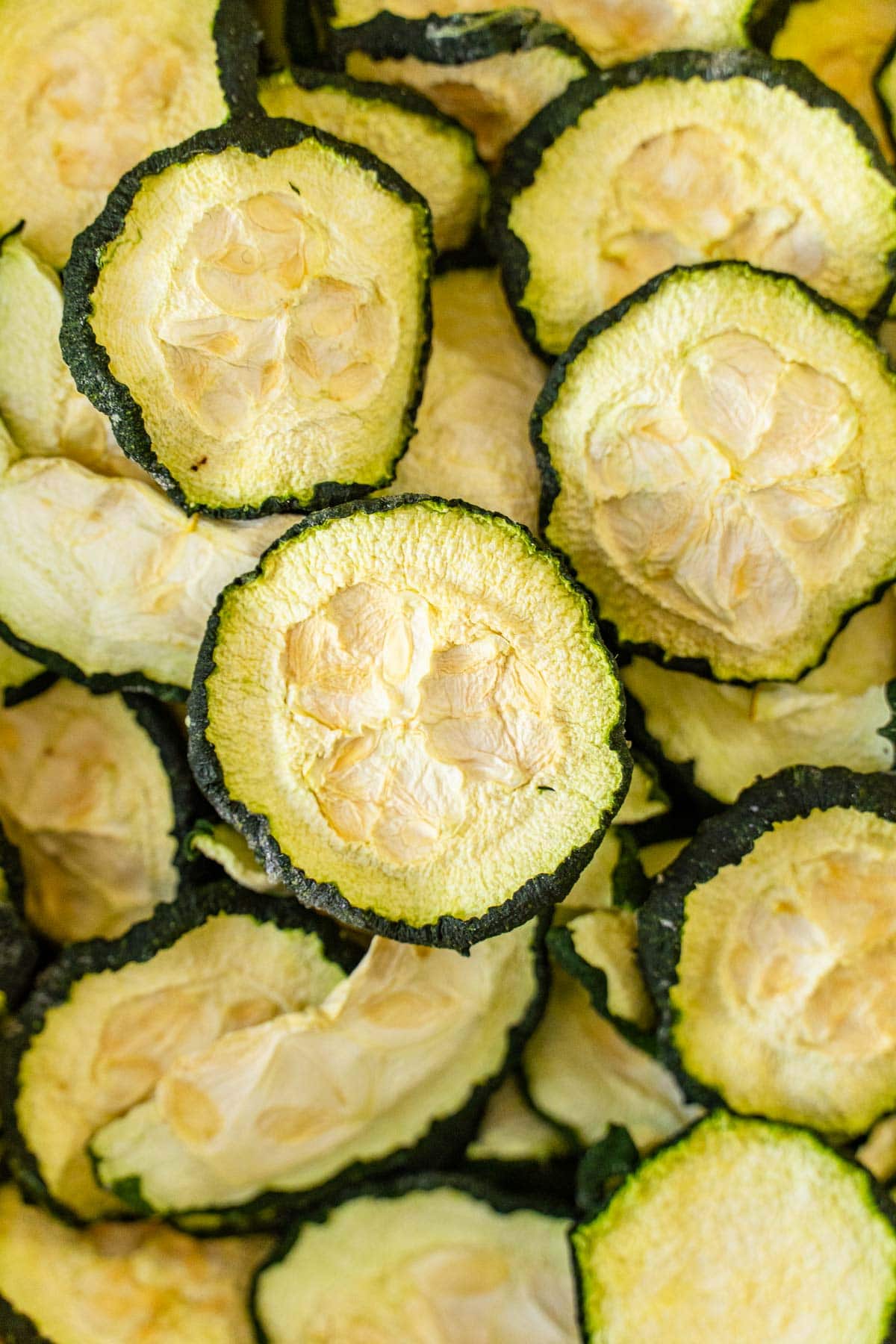
Dehydrated zucchini can be stored for upwards of a year and used wherever you would use fresh zucchini. All they need is a few minutes in boiling water and they will plump right back out.
If you’re going to be steaming rice or boiling pasta, just add them in at the start. Toss them into soups, stews, braises, red sauces, or anything else with a long simmer time. They’re also an incredible way of adding vegetables to backpacking meals. One of our favorite backpacking meals to date is this Mushroom and Zucchini Risotto.
You can also toss zucchini with a little salt (and your favorite spices) and enjoy them on their own as healthy, crunchy zucchini chips. Or use them as appetizer dippers instead of crackers!
Alright, alright. You get it, there are lots of ways to use dehydrated zucchini. So let’s dive into the proper way to dehydrate and store them.
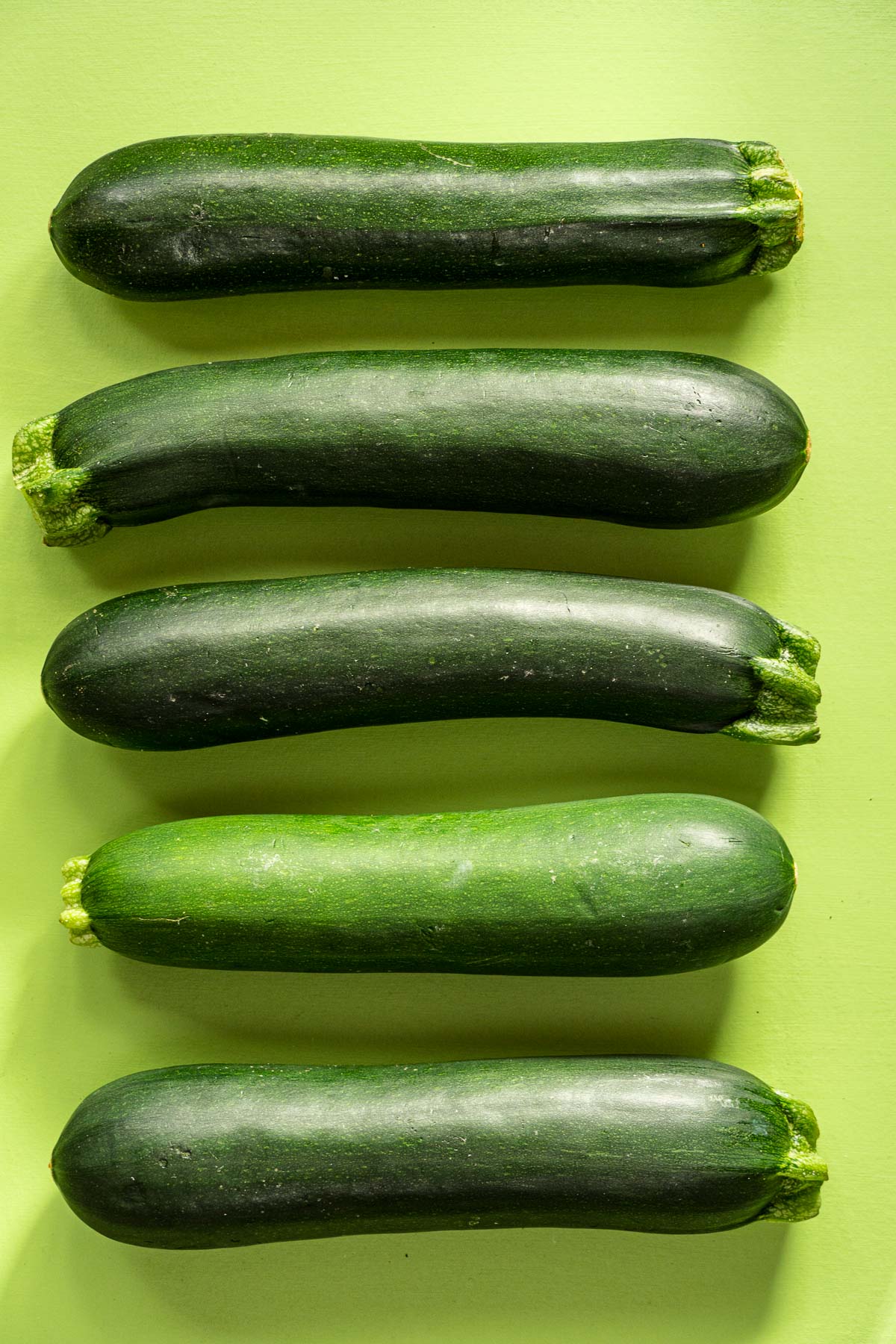
Choosing zucchini to dehydrate
All sorts of zucchini varieties can be dehydrated! Choose small to medium-sized zucchini that are firm and don’t bend. Large or overgrown zucchini tend to have more seeds, which will need to be removed.
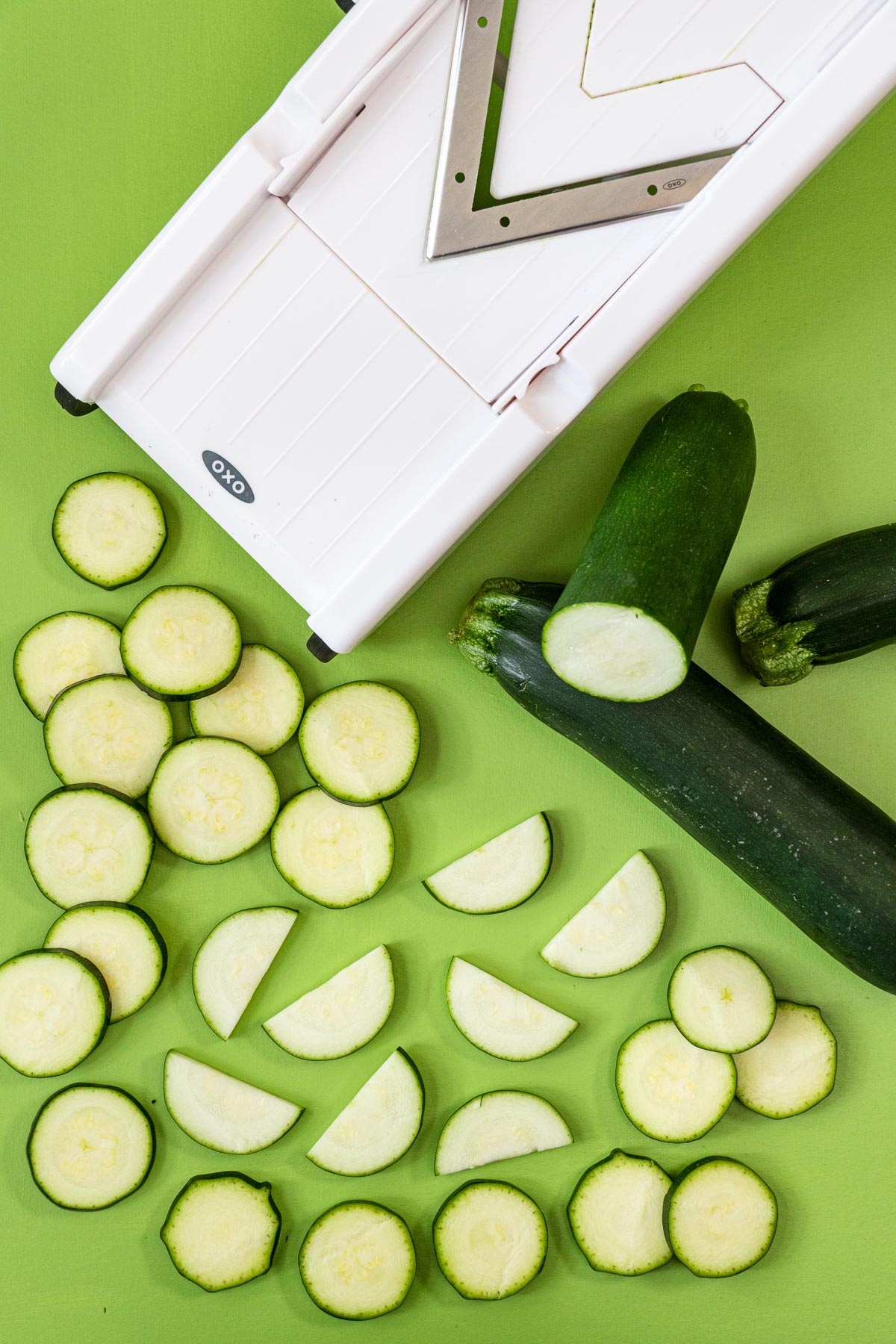
Prepping zucchini for dehydrating
Before you start prepping your zucchini, make sure your counters, equipment, and hands are clean & sanitized to prevent contamination, which can spoil your batch down the line.
- Clean the zucchini: Thoroughly wash the zucchini and dry with a clean towel.
- For zucchini pieces: Using a sharp knife or mandoline, cut the zucchini into ¼” slices. From there, you can cut them into half moons, quarter slices, or cubes if you like.
- For zucchini chips: slice to ⅛” inch rounds. Season with salt, garlic powder, onion powder, dried herbs, etc.
- Zucchini shreds: Use the large holes of a box grater and shred the zucchini.
- Try to keep the pieces to a uniform thickness to help with even drying.
Equipment Spotlight: Dehydrators
If you’re in the market for a dehydrator, we recommend buying one with an adjustable temperature. This will allow you to dial in the drying temp to give you the best results for individual ingredients. The dehydrator we recommend (and use) most often is the COSORI dehydrator. You can also check out our best dehydrators post for a comparison of all the dehydrators we’ve used and would recommend.
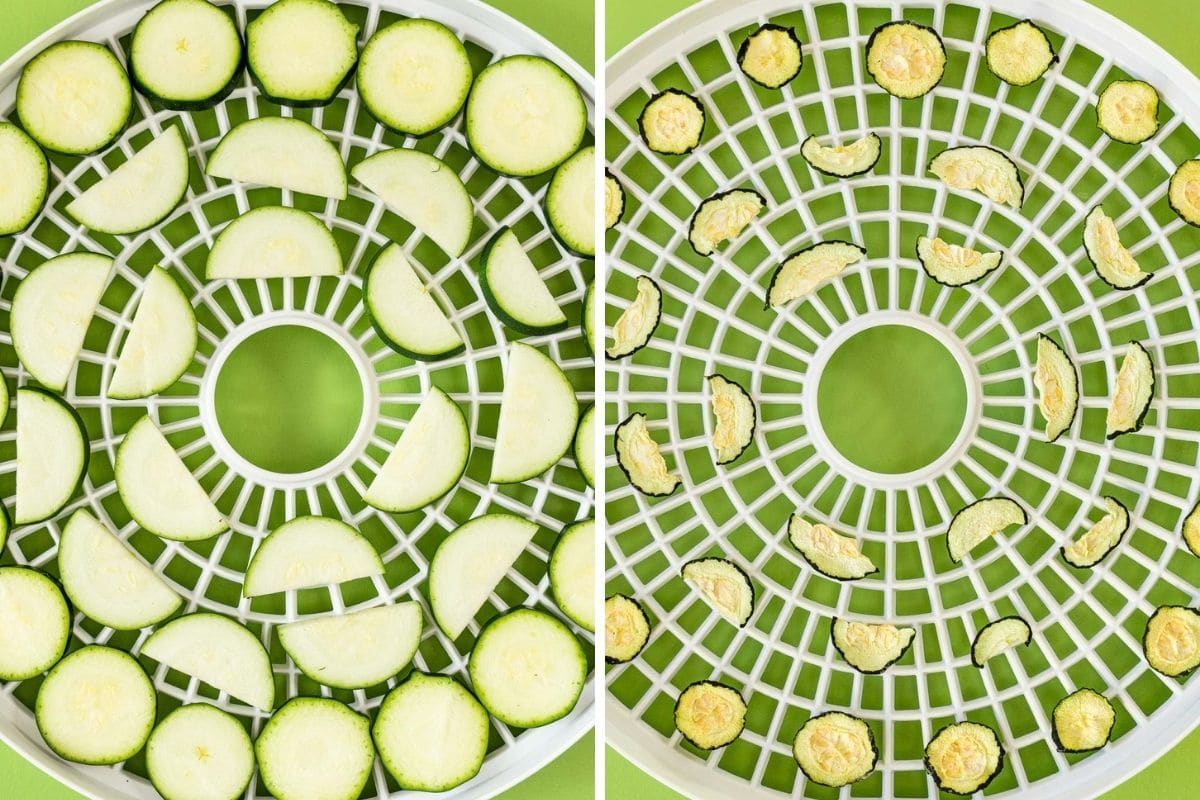
How to dehydrate zucchini
Dehydrating zucchini is so easy! Once your zucchini is prepped, set up your dehydrator and follow these steps:
- Arrange the zucchini on your dehydrator trays. Leave space between the pieces to allow air to circulate. If you cut your zucchini into quarter slices or shreds, you’ll want to use a mesh tray liner to prevent them from falling through the holes.
- Dehydrate at 125ºF (52ºC) for 6-12 hours until the zucchini is dry and brittle—they should break, not bend.
- Depending on your machine, you may need to rotate the trays every so often to promote even drying.
How to tell when zucchini is done
Zucchini should be hard and brittle when they are completely dried. To test, let them cool, then try to bend a few pieces. They should snap in half if properly dried. If they bend, put them back into the dehydrator or oven to dry longer.
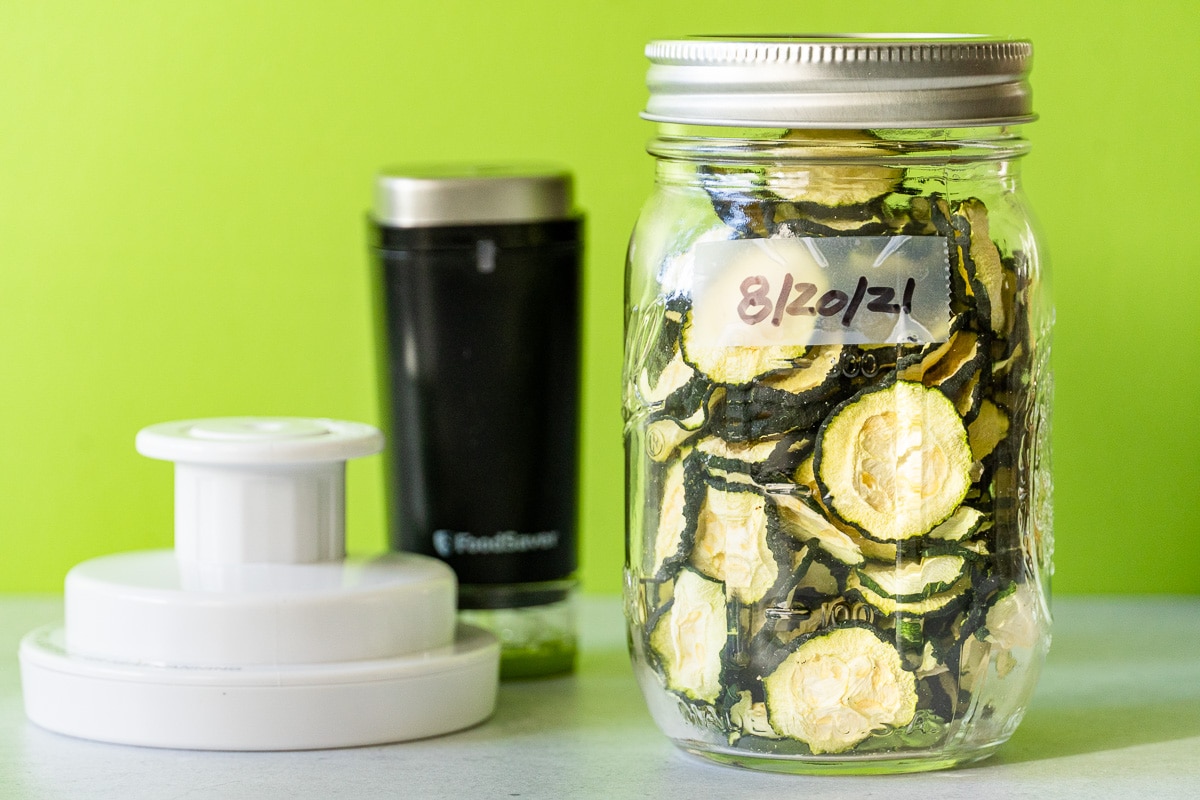
How to store
When properly dried and stored, dehydrated zucchini can last up to a year. Here are our tips for storage:
- Let the zucchini cool completely before transferring it.
- Condition: Loosely pack the zucchini in a transparent airtight container. Check it daily for a week to check for signs of moisture or condensation, and shake to help prevent the slices from sticking together. If signs of moisture appear, stick them back into the dehydrator (as long as there’s no mold—in that case, toss the batch). After a week, if there’s no signs of moisture or mold, you can package them for long-term storage.
- Store in a clean, airtight container. For longer shelf life, vacuum seal.
- Use a moisture absorbing desiccant packet if you anticipate opening the container often, or if you live in an area with high humidity.
- Label the container with the date and any other important details.
- Place the container in a cool, dark, and dry place—inside of a pantry cabinet works well.
Vacuum Sealing Tips
We like to store our dehydrated food in mason jars that have been vacuum-sealed using this handheld FoodSaver vacuum sealer along with these jar sealing attachments. This gives us the benefit of vacuum sealing without the waste (and expense) of plastic vacuum sealing bags. Since the jars are clear we make sure we store them in a dark spot in our pantry to keep them out of direct light.
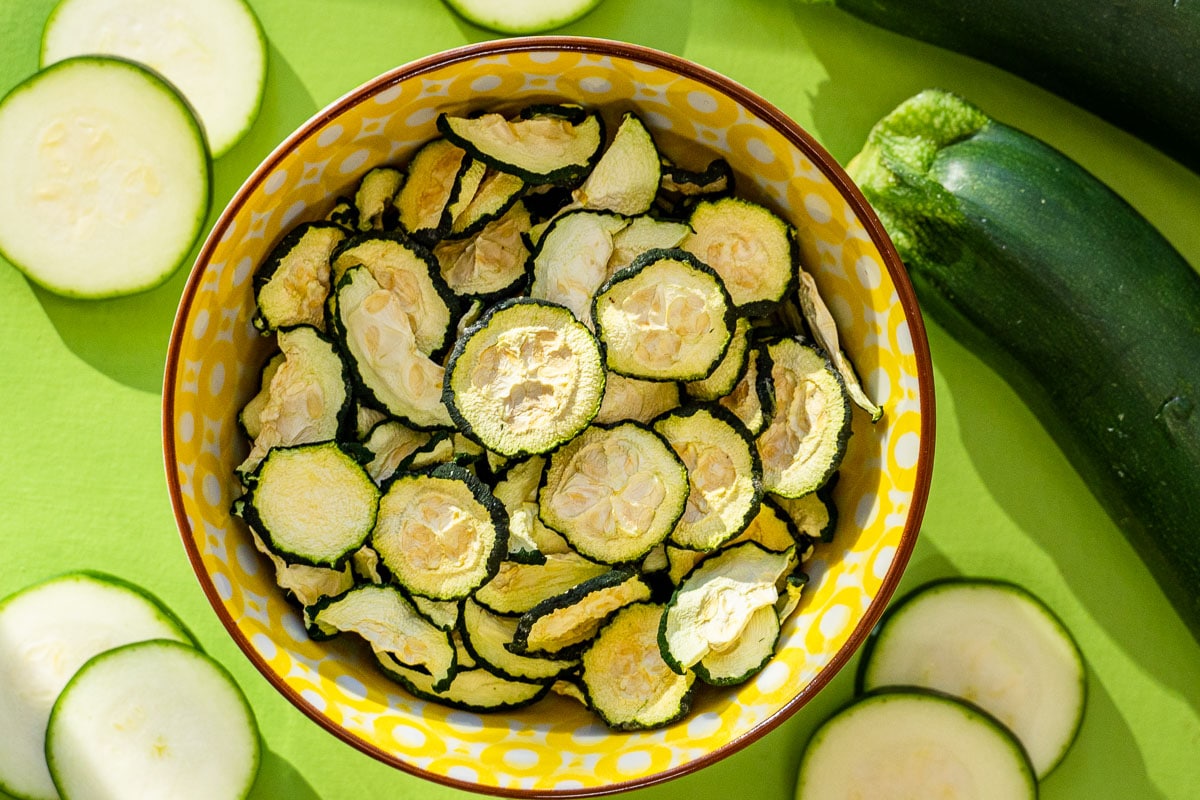
How to use
To rehydrate zucchini, place it in a bowl with boiling water and let it sit for 15-20 minutes. Or, add the dried zucchini directly into meals like soups or stews that have a lot of liquid and will cook for a bit.
Here are a few ideas of how to use your zucchini:
- Add to soups, stews, or casseroles
- Season before drying to make zucchini “chips” for snacking
- Use zucchini shreds in hash browns for a nutritional punch
- Use zucchini shreds in zucchini bread or muffins (be sure to squeeze out excess moisture after rehydrating)
- Add to frittatas (shreds or quarter slices work best)
- Add to homemade marinara sauce (shreds or quarter slices work best)
- Use them in these backpacking/camping meals:
Fresh to dehydrated conversion
2 cups (190g) of zucchini pieces will yield ⅓ cup (14g) dried zucchini

Dehydrated Zucchini
Ingredients
Equipment
Instructions
- Start with clean hands, equipment, and countertops.
- Slice the zucchini—For zucchini pieces: Using a sharp knife or mandoline, cut the zucchini into ¼” slices. From there, you can cut them into half moons, quarter slices, or cubes if you like.For zucchini chips: slice to ⅛” inch rounds. Season with salt, garlic powder, onion powder, dried herbs, etc.For zucchini shreds: Use the large holes of a box grater and shred the zucchini.
- Arrange the zucchini on dehydrator trays, utilizing a mesh liner to prevent the zucchini from falling through the holes as it shrinks.
- Dehydrate at 125ºF (52ºC) for 6-12 hours until the zucchini is dry and brittle—it should break, not bend (see note 2).
Storage Tips
- Let the dried zucchini cool completely before storing.
- Short term storage: If zucchini will be consumed within a few weeks, store in a ziptop bag or sealed container on the counter or in a pantry.
- Long-term storage: Condition by loosely packing the dried zucchini in a transparent, airtight container. Leave it on the counter for a week and check it daily for signs of moisture. If condensation appears, return the zucchini to the dehydrator (unless there are signs of mold—then, throw out the whole batch). Shake occasionally to keep the pieces from sticking together.
- After conditioning, store in an airtight container in a cool, dark place for up to a year. Vacuum sealing will help extend the shelf life and quality of the zucchini.

From Australia: Thank you so much for sharing your recipes. I have recently received a dehydrator from our daughter who does a lot of bush walking. I have tried your method for drying zucchini and capsicum, and it was very good. I am about to start drying some of our herbs from to garden now and am beginning with rosemary. I appreciate your clear directions, and ease of using your site. Thanking you once again. Patricia